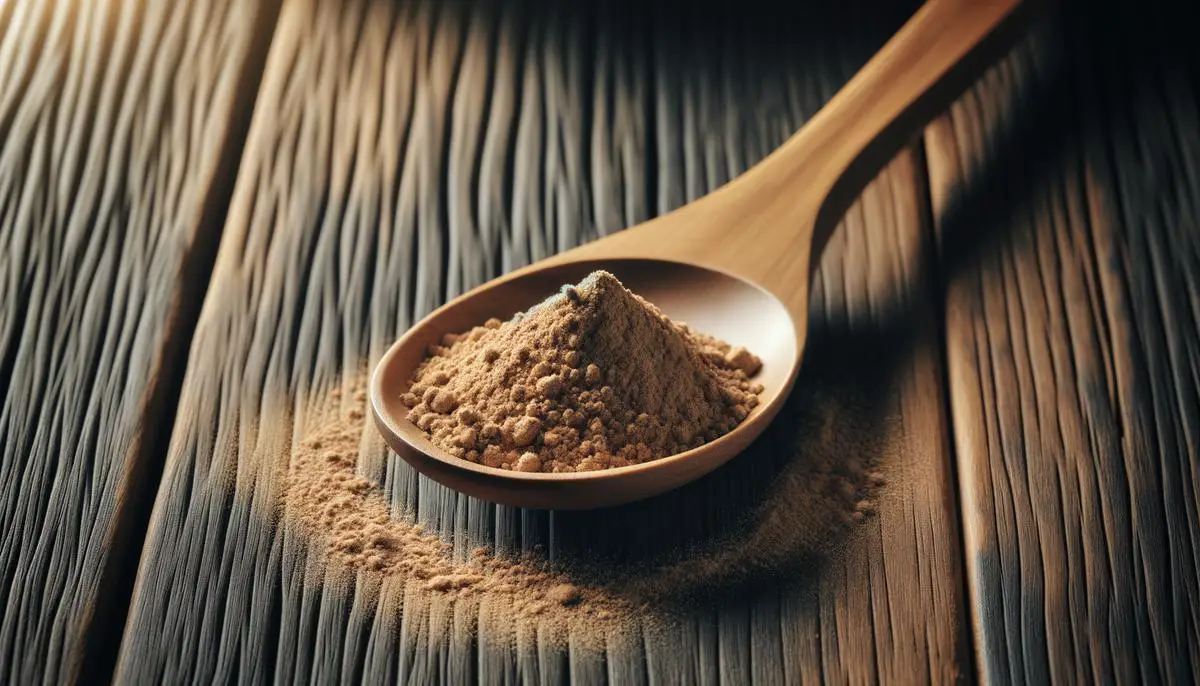
Understanding Soy Sauce Powder
Soy sauce powder finds its roots in Asian culinary history, evolving from the centuries-old tradition of soy sauce production. This innovative form maintains the rich umami flavor of its liquid counterpart but presents it in a compact, easily storable powder. The process begins with the fermentation of soybeans, a combination of beans, wheat, and Aspergillus mold. This mold breaks down the proteins and starches in the soybeans and wheat into flavorful compounds.
The next step involves aging, where the mixture can rest for months to years, developing its character. As the aging phase concludes, the liquid is carefully strained, setting the stage for dehydration. The dehydrating process converts the liquid into a concentrated powder without losing the depth of flavor that soy sauce is known for.
Soy sauce powder, with its contents of soybeans, wheat, and added salt, embodies the foundational flavors of traditional soy sauce while offering culinary versatility. This form allows chefs and food enthusiasts to add the distinct taste of soy sauce to any dish, whether it's dry rubs for meats, seasoning blends, or marinades, without altering the dish's moisture content. For those looking to recreate the liquid format, rehydration is simple, blending soy sauce powder with water to preserve its original taste profile.
Soy sauce powder is not just about ease of use or storage. It allows for the exploration of soy sauce's functionality in non-traditional dishes, from snacks like popcorn and nuts to inventive desserts.
The powder form also opens up options for dietary considerations, incorporating non-GMO and gluten-free choices depending on the source of tamari used, making it a conscientious choice for those with specific dietary restrictions. The creation and inclusion of soy sauce powder in modern kitchens signifies a blending of tradition with innovation, enabling an infusion of ancient flavors into contemporary cuisine.
Soy sauce powder speaks to the combination of flavor, tradition, and modern culinary needs, establishing itself as a staple in both professional chefs' and home cooks' pantries. Its emergence from traditional soy sauce methods to a global pantry item reflects an appreciation for cultural culinary foundations while embracing the innovation necessary in today's dynamic food landscape.
Culinary Applications of Soy Sauce Powder
In the heart of the kitchen, soy sauce powder emerges as a dynamic and potent ingredient, ready to elevate your culinary creations with its deep, umami-packed flavor. This finely milled powder dissolves the barrier between the traditional liquid form and a versatile, fuss-free cooking companion, ready to transform dishes across a broad spectrum.
Enrich Your Dry Rubs: Begin by whisking a spoonful of soy sauce powder into your favorite blend of spices and herbs. This mixture lends a deep flavor to meats, elevating barbecue or oven roasts. Whether it's a brisket or chicken wings, soy sauce powder integrates seamlessly, enhancing the meats' flavor profile without adding moisture that could affect crispiness.
Marinating Mastery: Soy sauce powder dances through a marinade, offering its rich, umami notes without altering the liquid balance. The powder's concentrated flavor allows it to imbue meats, fish, or tofu with the essence of soy sauce, ensuring every bite is infused with depth. Its ability to dissolve completely means no gritty texture, just pure flavor in your dish.
Seasoning Like A Pro: With soy sauce powder, seasoning becomes an art form. Sprinkle it over vegetables before roasting to introduce a savory glaze that caramelizes under heat, or incorporate it into batter for seafood or vegetable tempura for subtle richness. Dipping sauces, dressings, and homemade snack mixes can all benefit from a pinch of this culinary powder.
Snacking Revolutionized: A light dusting of soy sauce powder over popcorn, nuts, or homemade chips brings a new dimension to snacking. The joy of discovering a complex taste profile keeps you engaged and satisfied.
Undercover Agent in Sauces and Soups: Soy sauce powder acts as an undercover flavor agent in liquid applications. Swirl it into broths, stews, and soups for an immediate depth of flavor that merges seamlessly with other ingredients, building a layered experience without extensive simmering times. Be it a noodle soup craving intensity or a sauce begging for complexity, the powder is up for the challenge, integrating quietly but making its presence felt.
Exploring the versatile roles of soy sauce powder in your kitchen reveals that its application is only limited by imagination. From robust marinades to subtle seasonings, its capacity to infuse meals with umami flavor while maintaining dish texture makes it an invaluable ally in culinary endeavors. Incorporating it into your arsenal pays homage to the complexity of soy sauce's heritage while modernizing traditional flavors for contemporary tastes.

Tips and Tricks for Soy Sauce Powder
Navigating the realm of culinary delights, soy sauce powder emerges as a formidable ally for the gourmet adventurer keen on transforming everyday meals. This unassuming ingredient, rich in history and brimming with versatility, demands closer examination to fully leverage its potential. Here, we delve into practical wisdom, tips, and methods for mastering the art of soy sauce powder, ensuring it becomes an indispensable asset in your culinary toolkit.
Let's begin by crafting the essence of soy sauce in its most authentic form – the rehydration process. Achieving the perfect balance requires a nuanced touch. Aim for a ratio of 1 part soy sauce powder to 1.5 parts water by weight to unlock a flavor mirroring the rich, complex profile of its liquid counterpart.1 Stir gently until fully dissolved to create a bridge to traditional soy sauce application.
The magic lies in elevating the ordinary. Imagine soy sauce powder crafting vinaigrettes that dance on the palate without altering their delicate constitution. By adding just a half teaspoon to your vinaigrette mix, you engage a depth of umami, augmenting flavor profiles while keeping the structure of your dressing intact. This subtle integration exemplifies how soy sauce powder can whisper complexity into dishes without overshadowing other elements.
Homemade snacks are a domain ripe for revolution with soy sauce powder. Its innate ability to adhere to surfaces makes it ideal for seasoning everything from popcorn to nuts and crackers. A light sprinkle transforms mundane nibbles into exotic treats, channeling the essential savory notes that delight the umami enthusiast.
Soy sauce powder also stands as a sentinel of innovation in sauce exploration. Reconsider your approach to marinades and BBQ sauces. The inclusion of soy sauce powder not only intensifies flavor but ensures a consistency tailored for perfect adhesion to your chosen proteins. Vegetarian dishes benefit immeasurably from its addition, whereby a soup or stew finds new dimensions of taste through a mere pinch of this powdered treasure.
Lastly, let's not overlook the joy of experimentation that soy sauce powder invites. Encourage the merging of culinary worlds by introducing it into unexpected dishes. A sprinkle over ice cream or a dusting on chocolate truffles might seem unconventional, yet it paves the way for captivating and intriguing flavor profiles.2
Mastering the use of soy sauce powder requires no elaborate rituals but a willingness to embrace its potential. Whether rehydrating, enhancing dressings, invigorating snacks, revolutionizing sauces, or venturing into unexplored taste territories, soy sauce powder stands ready to elevate your culinary experience. Implement these tips and unlock pathways to gastronomical delight, ensuring soy sauce powder secures a permanent place in your spice cabinet. Embrace this journey of discovery, and let the transformative power of soy sauce powder reveal itself in the alchemy of your cooking.

- Shurtleff W, Aoyagi A. History of Soy Sauce (160 CE To 2012). Lafayette, CA: Soyinfo Center; 2012.
- Mouritsen O, Styrbæk K. Umami: Unlocking the Secrets of the Fifth Taste. New York, NY: Columbia University Press; 2014.



